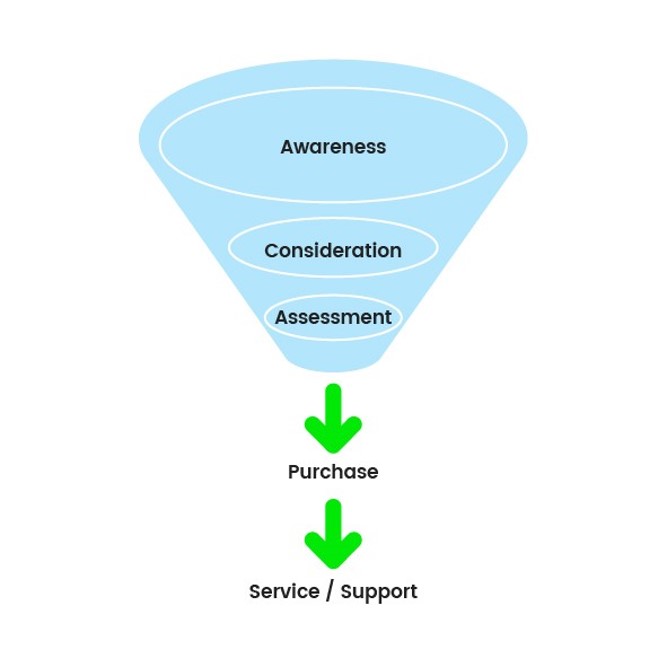Data is not big, it is massive. It is generated from customer interactions, communications, and increasingly from IoT (the internet of things). Yet with data so common, confoundingly customers and their journeys are increasingly difficult to understand.
Greater Customer Intelligence = Greater Revenue
Understanding customers is the key to increasing revenue. That is true for every stage of the customer lifecycle.
When prospects are understood, customer acquisition is faster with wider margins.
When customers are understood, they can be engaged to increase both purchases and spend.
That understanding extends to retaining or renewing customers to maintain revenue and contain replacement costs.
Customer intelligence drives greater revenue because it saves companies from flailing about trying to engage customers through random tactics. Ill-informed tactics, even through the “cost-effective” channels, are wasteful—they waste time, money, and resources.
Worse, senseless tactics (like tired interruption marketing) can alienate customers and send them screaming to the competition.
To create valuable customer intelligence and enjoy the resulting revenue, however, we must first acknowledge two foundational truths:
#1: Customers Map Their Own Unique (Non-Linear) Journeys
Customers have access to boundless content from countless sources: websites, digital, third parties, social media, word of mouth, print, real-life, etc. Customers select this content at their discretion and on their schedule.
In 2012, Accenture called this the non-stop customer: consumers break free of the traditional sales funnel and take charge of their decision process by selecting content from their preferred source(s).
As companies are now unable to control customers’ content consumption, customers’ behavior became non-linear. Customers may start their decision process in the middle, or start at the end and move backward.
Adding to the complexity, each customer maps their own distinct journey.
We expect this customer behavior to be like this:

When the reality is this:
#2: Non-Linear Behavior Introduces Gaps in Data
When customers access content outside a company’s infrastructure, it introduces gaps in customer data.
While companies may have terabytes of customer data, that data is not complete. It does not map a neat end-to-end trail of customers’ progression through awareness, consideration, assessment, and decision.
Instead, companies are often left with fragments of customer data—scattered data describing what can seem like meaningless disjointed behavior.
Here comes the challenge: companies must create significance from that fragmented data despite the gaps.
Deriving the right customer intelligence from fragments of available data can mean the difference between acquired or lost customers, growth or flat revenue, retained or defected customers, fat margins or uncontrolled costs.
Informed interactions require more than repeatedly prompting customers to buy! Buy! Buy!
Creating Intelligence from Fragmented Data
I presented a challenge to create significance from available data, despite the gaps. Meeting the challenge requires analyzing segments of data and developing intelligence about customers’ needs and intentions.
Our objective now is to meet customers at milestones in their journeys.
As an example, I created important intelligence from analysis of a client’s web traffic: two distinct groups were identified based on their behavior.

Interestingly, both groups viewed the pricing page. However, the behavior before and after was entirely different for the two groups, exposing different needs and different decision processes.
Group 1 was Price Sensitive
The first group went immediately from the home page to the pricing page. A good percentage dropped immediately. The balance continued to educate themselves through a series of pages before purchasing.
Concluding that this group was price sensitive, we added value and ROI content to the pricing page so that the first decision wasn’t entirely about cost.
The result was an increase in the percentage of those that continued to learn about and purchase the product.
Group 2 was Price Insensitive
The second group educated themselves about the product over a series of pages, with some dropping as they progressed. The majority, however, almost as an after-thought, checked the pricing page immediately before purchasing.
The insights gave us a new appreciation for the significance of those pages. We examined the content, transitions, and customer experience.
By investing in those pages which we now knew were key to supporting valuable decisions, we were able to increase and speed the purchase process for this group.
Intelligent Strategy, Not a Slow Beatdown
What was key to identifying these two different groups—and their different needs, and what supported their decisions—was analyzing a subset of behavioral data.
The analysis itself was uncomplicated. However, creating significance from data of whatever size required expertise.
Transforming that new insight into actionable strategy required expertise. The client realized valuable results from both groups due to that discipline.
What we didn’t do was jump on both groups just because they’d viewed the pricing page. There was no slow beatdown of continual, unwelcome messaging to “just buy already!” In this example, one group’s decision was made when they abandoned the pricing page. For the second group, badgering would have alienated them just as they were about to purchase.
Consider the Risk
Just as no dataset will be perfect, and no analysis ever results in gift-wrapped understanding, creating intelligence from subsets of data cannot be exact either.
Conceiving strategy and accompanying tactics may require a leap.
However, it is prudent to consider any risks associated with implementing the strategy that results. Is it invasive? Potentially alienating? Creepy? What is the cost of being wrong?
In my client example, there was no risk. Had we been wrong about the Price Sensitive group and shown them content about value, there was no harm. If we were wrong about the Price Insensitive group and improved content and their experience, again no harm.
* * *
Customers now lead their own unique journeys. As they do, they leave a trail of data everywhere. However, now parts of the trail are obscured.
For companies that intend to efficiently acquire and grow customers, they must understand the different journeys despite data gaps in the trail. Rather than abandon all hope and pester customers to “just buy it already!” companies can create valuable intelligence from subsets of data.
The benefit of creating intelligence from available data versus empty tactics is customer understanding. When customers see that companies know their interests and needs, relationships result. Those customer relationships reliably generate faster, greater revenue at a lower cost.
Would you like to discuss customer intelligence? Measurable strategy? Or how to meet revenue goals? Let’s talk! Set up a 30-minute phone conversation with Marina.
Photo credit: Ramdan Authentic

